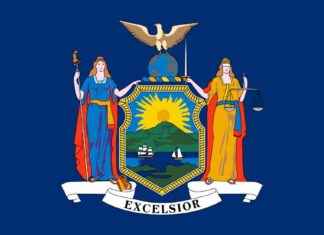Science fiction, romance, historical novel and adventure in books of hundreds of pages with global success? The answer has gathered 50 million readers in three decades: Diana Gabaldon, without an accent, born in Scottsdale, Arizona, 70 years ago and author of the Outlander saga, with time travel, kilts, wars and uprisings and, above all, , featuring the intertemporal romance of a 20th-century married woman, nurse Claire Randall, with an 18th-century Scottish wrestler, Jamie Fraser. To those who the laws of time travel do not prevent from having a daughter, Brianna, with whom in fact he meets in the ninth novel of the saga, which Gabaldon presented yesterday in Madrid: Tell the bees that I left (Salamandra ), set in the US War of Independence.
A presentation in which there were funny moments – a journalist asked her about a ghost in the new book and why she was recovering it from the first one, Forastera , and the surprised author answered that it was another ghost – and in which she left the door open to continue the saga beyond the tenth volume that he is already writing and that was marked as the end: “All the Outlander books end in a place that may be the end or could lead to a continuation, and it will not be an exception . I am 70 years old and I will surely finish this other book, but we will see what will happen next. It may or may not be the last.
Actually, the miraculous was the first, Outsider , which is doubly its protagonist, the nurse Claire: in time –after approaching a circle of ancient stones in Scotland in 1946 and appearing in 1743– and space, English between seasoned 18th century Scots, where he finds passion. A story that began in 1988 in the most unlikely way for a scientist –with training in zoology and marine biology–, university professor and mother of three children who had always wanted to be a novelist and who began to write secretly at dawn, sure that her husband would persuade her to wait until their children grew up.
The historical novel seemed to him a good territory and after shuffling even ancient Rome he decided to see an episode of the Doctor Who series in which an 18th century Scotsman with his plaid skirt appeared. He found it inspiring to see many Scottish kilts in action and decided that the Jacobite uprisings against William III, plus an Englishwoman to provide counterpoint and sexual tension, would be the basis. But that English woman began to speak in the novel as a woman of the 20th century. The solution? Travels in the time. The success has been such that it has spawned a popular series and increased tourism in Scotland, which has earned it awards in that country.
Asked if she sees parallels between the invasion of Ukraine and the convulsive historical periods in her novels, she says that “any self-respecting novelist tries to evoke the emotions of the moment, and those that can be experienced in Ukraine today, apprehension, doubts, fear. to the future, surely they are the same as in the US war of independence. The difference? Now we have total instantaneity of what happens in the world. Today the former Japanese prime minister was shot and an alarm went off. That gives a feeling of urgency, of compression of reality. During the US war of independence in Russia, similarly terrible things happened, but you didn’t know about it”.
And after confessing that he is reading, and thoroughly enjoying, the entire Harry Hole saga by Jo Nesbø, he confesses his literary references: “Writing has no secrets, what you do remains on the page, and I have read Dickens enough to know how I would tell something, and if there is a Dickensian moment in my novel, it inspires me. Other references are Robert Louis Stevenson, the crime novel by Dorothy L. Sayers or John MacDonald, whose thrillers show how to keep a book moving. And the British P.G. Wodehouse, with very comic and complicated plots. He played with the language and it inspires me a lot”.








